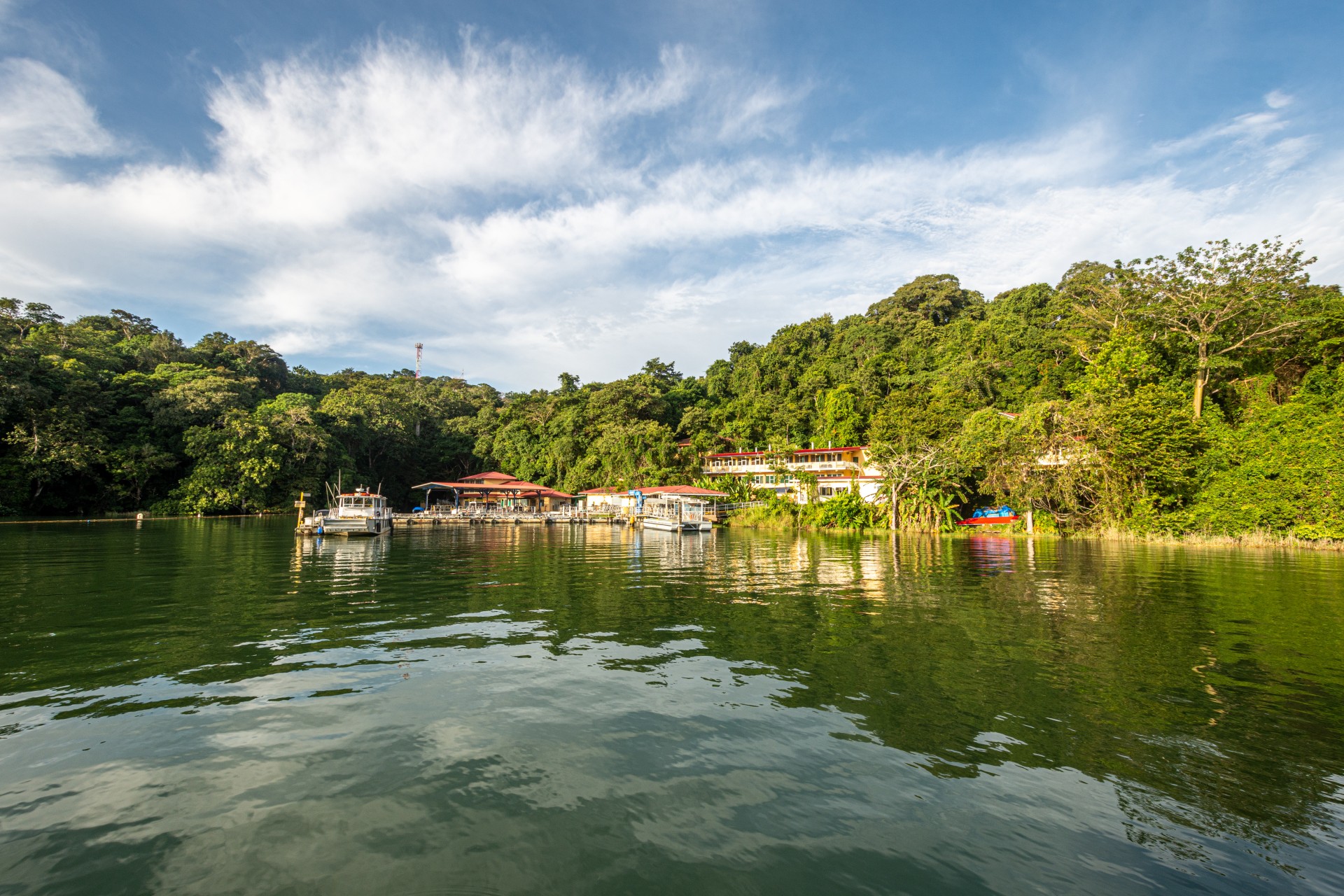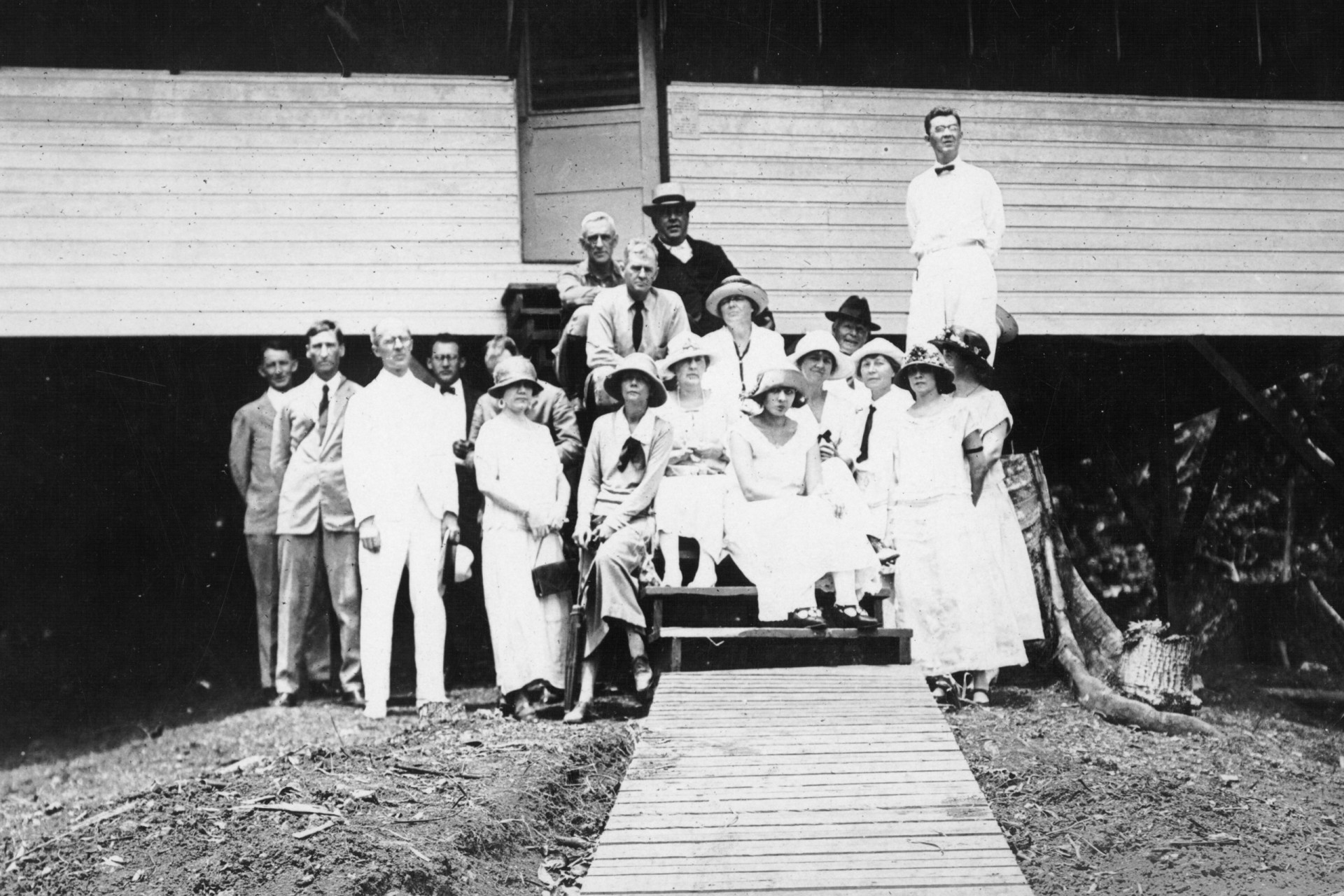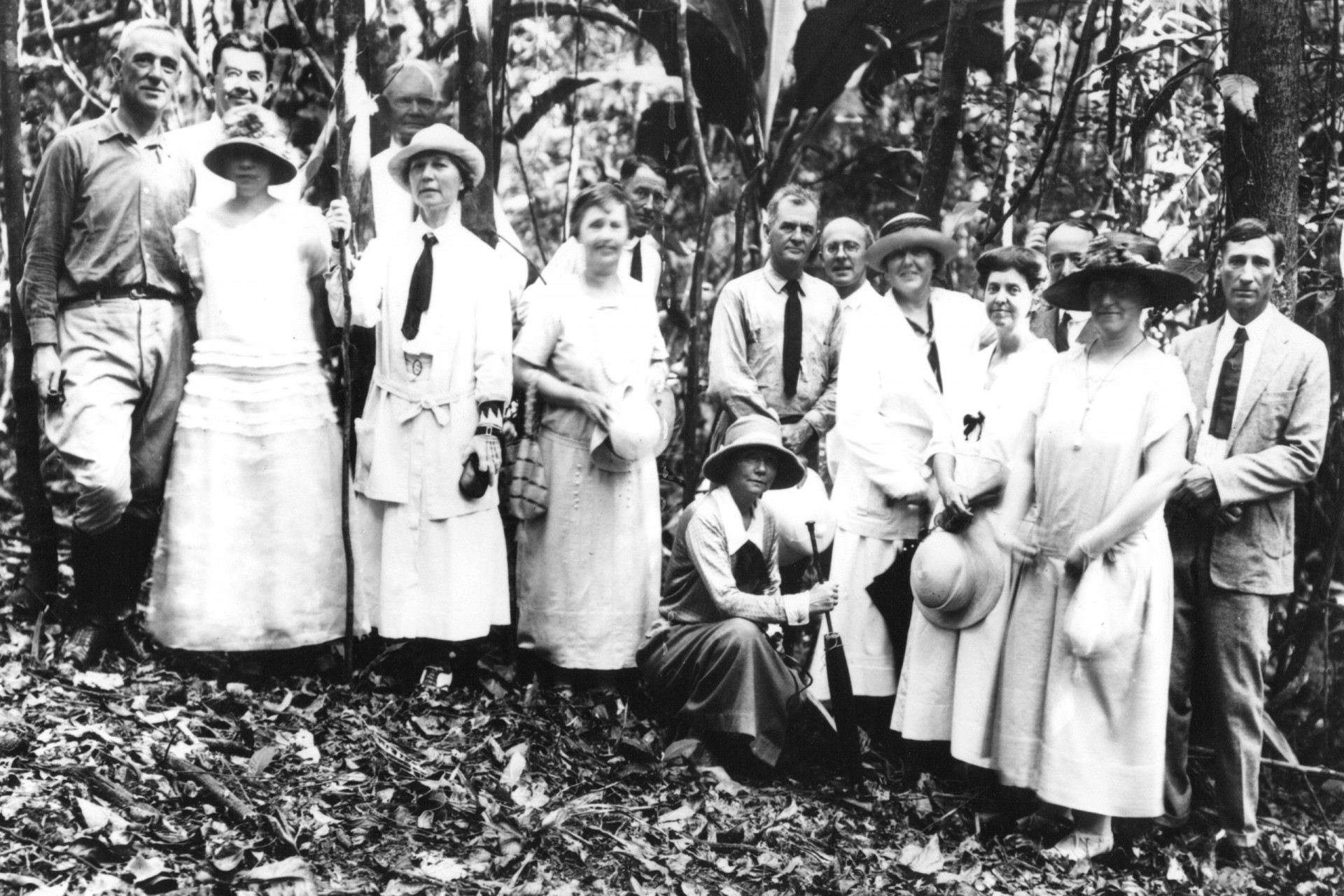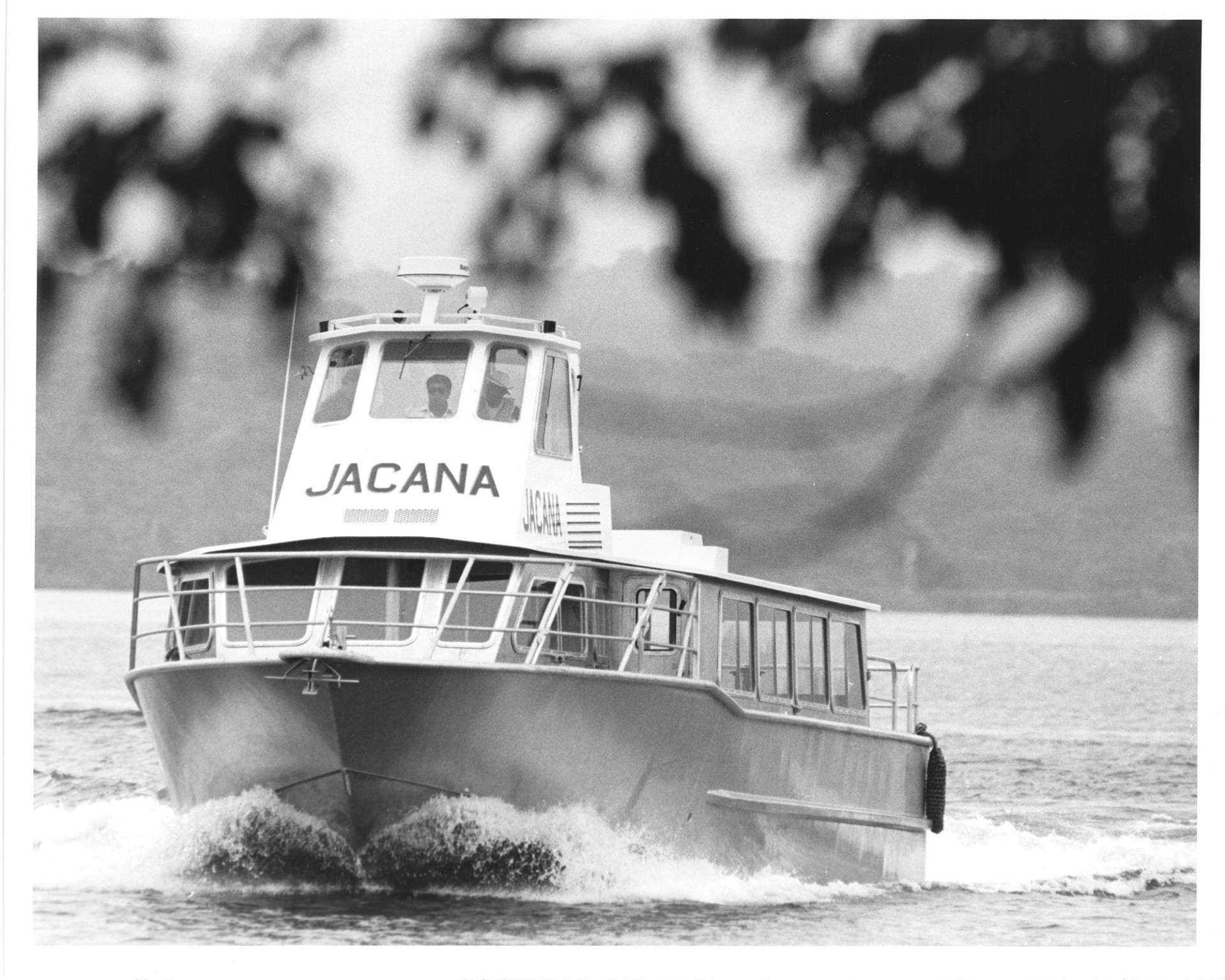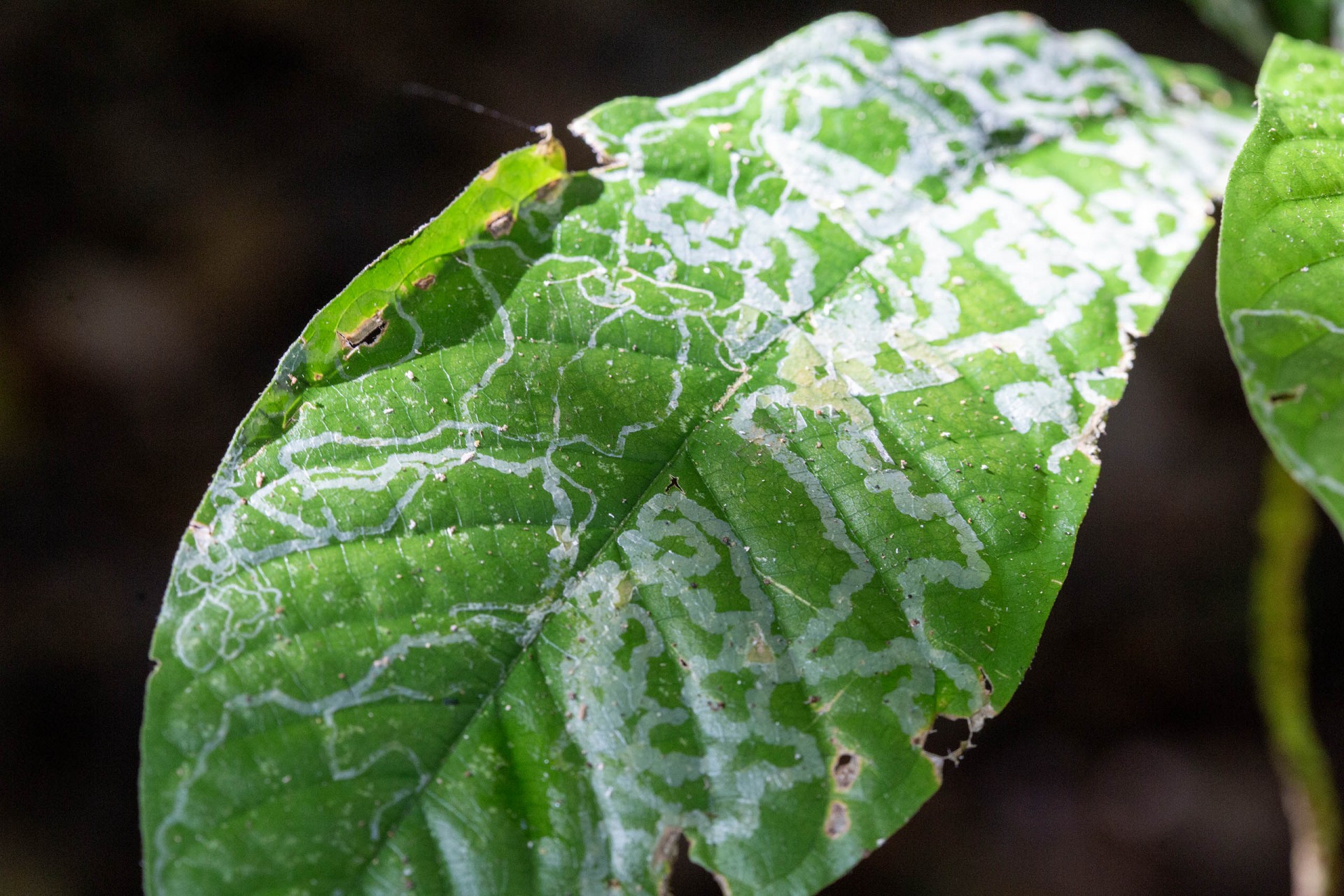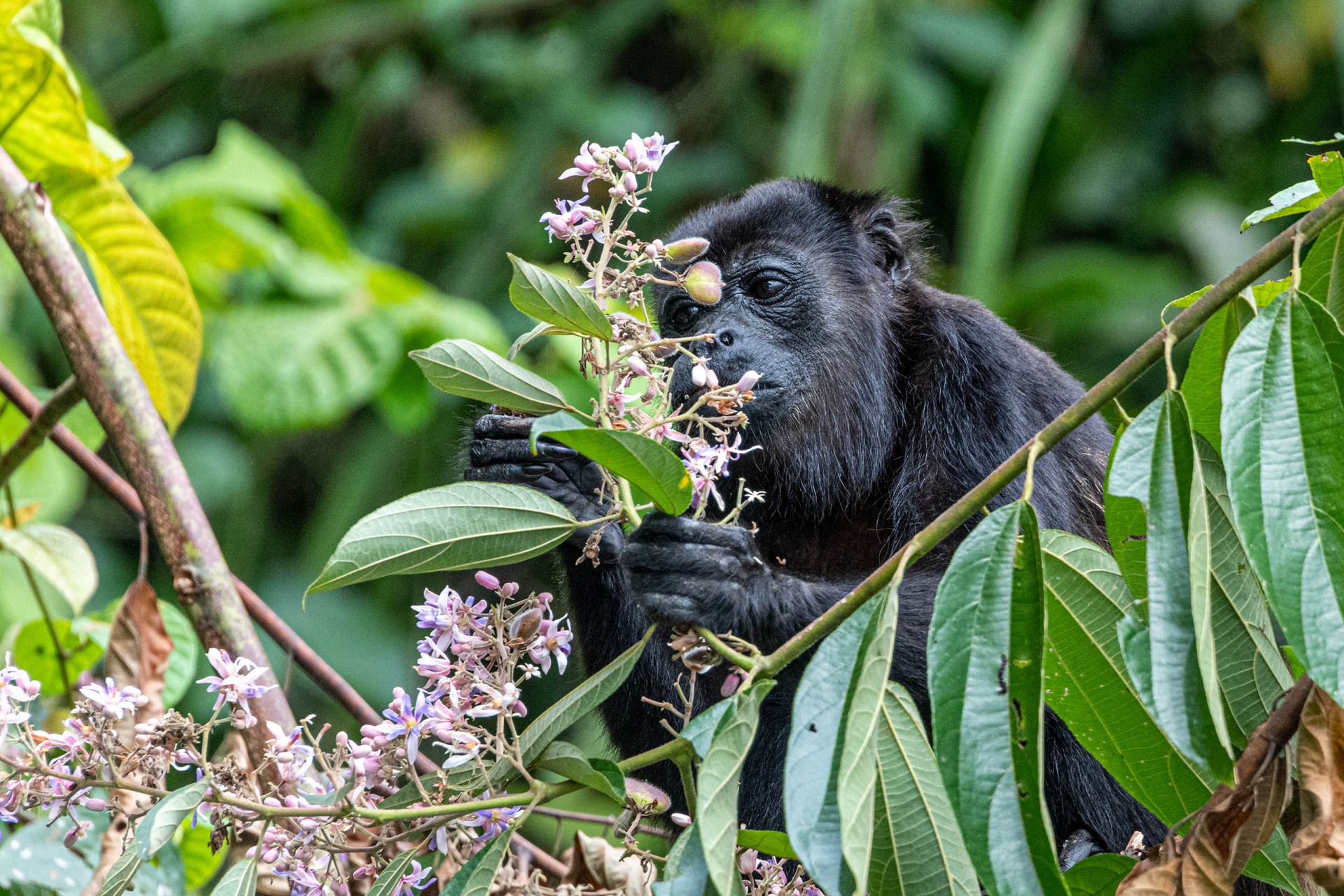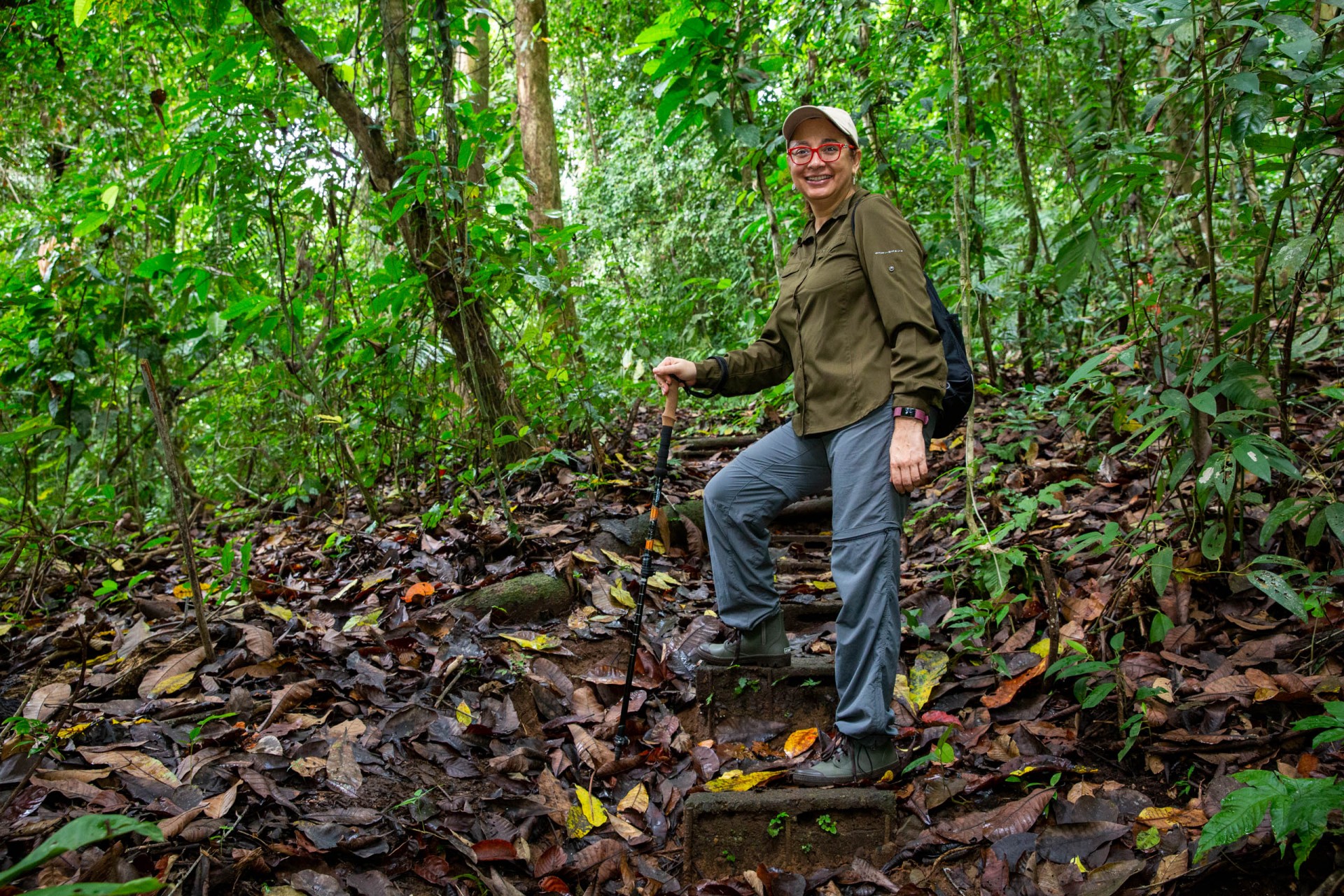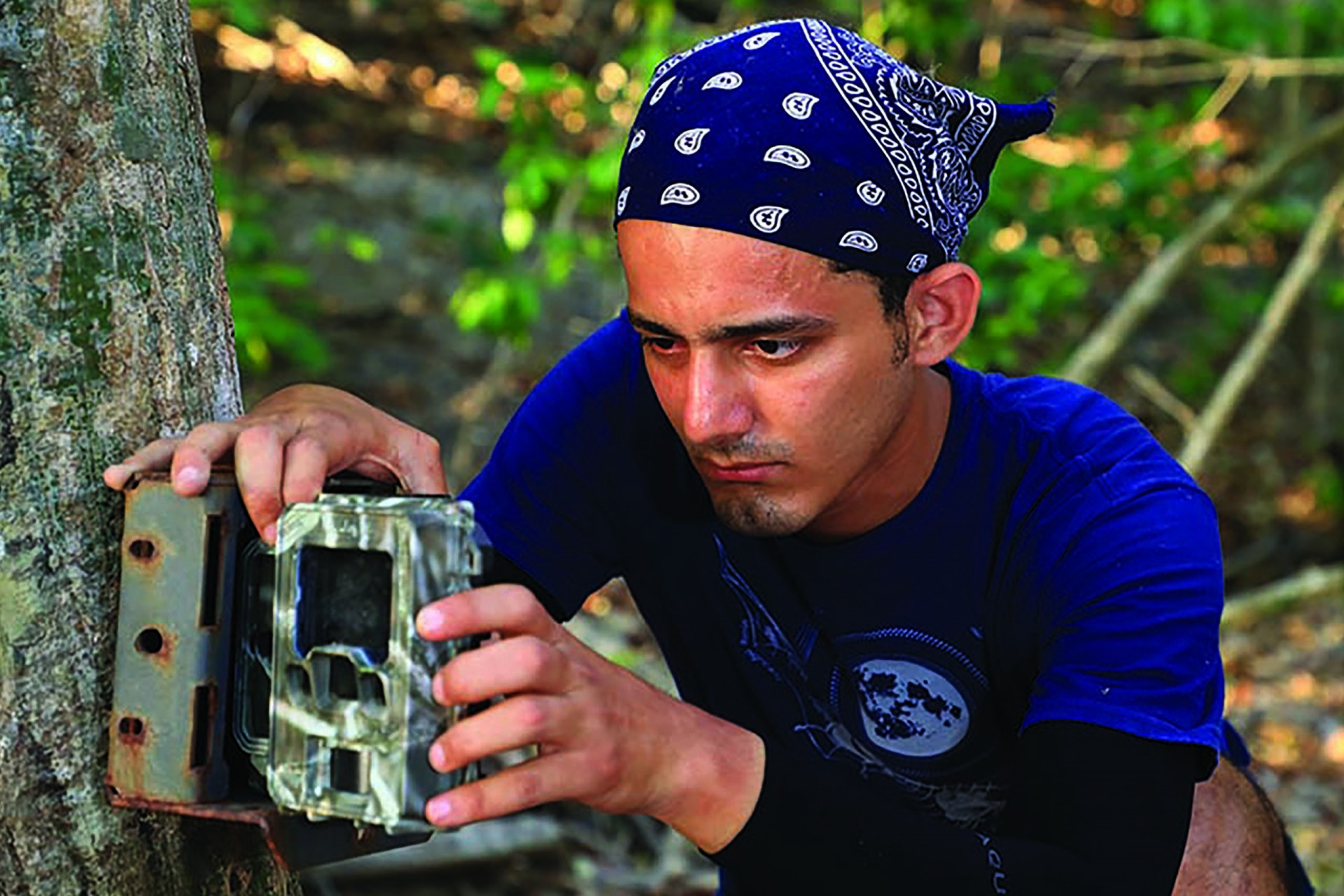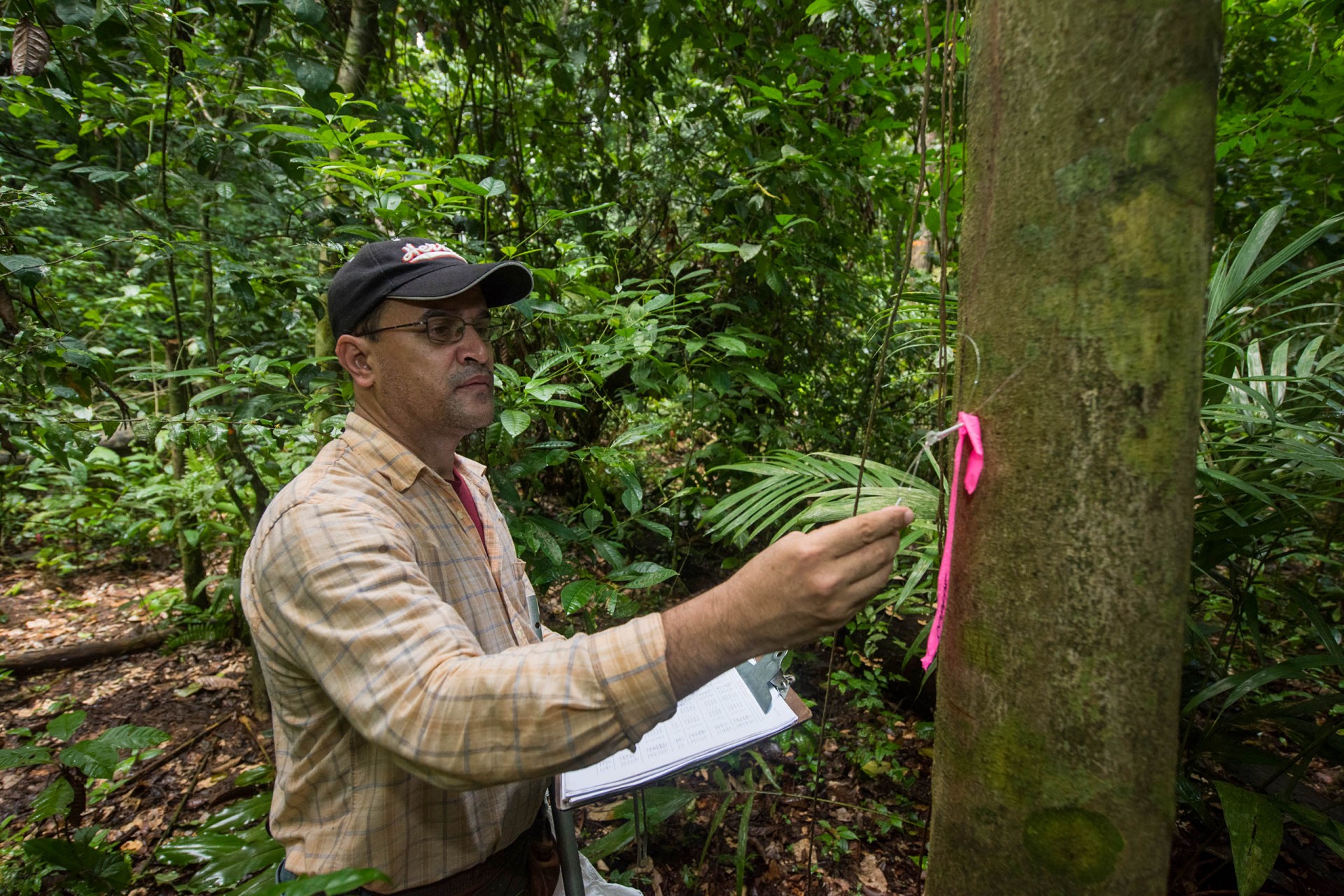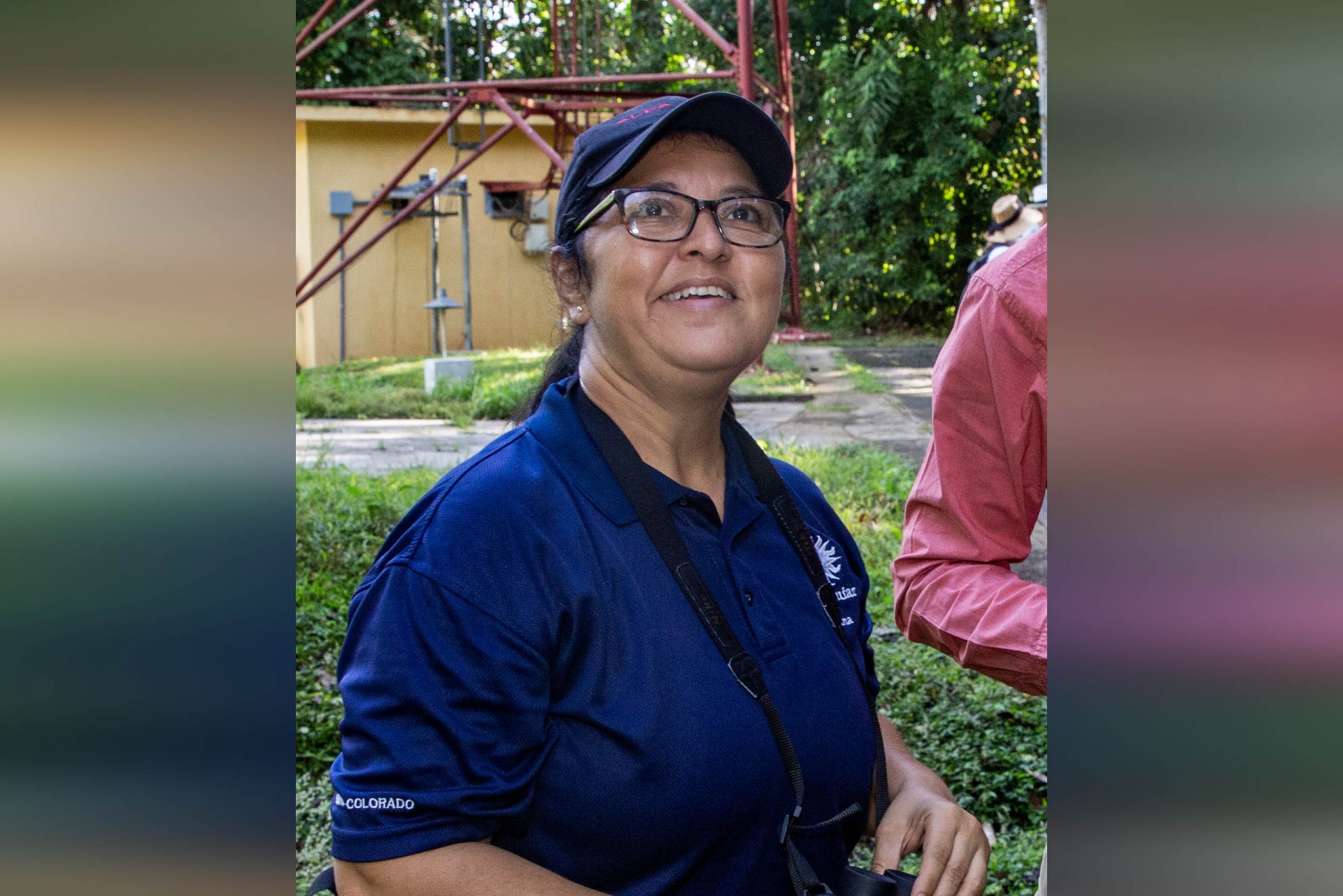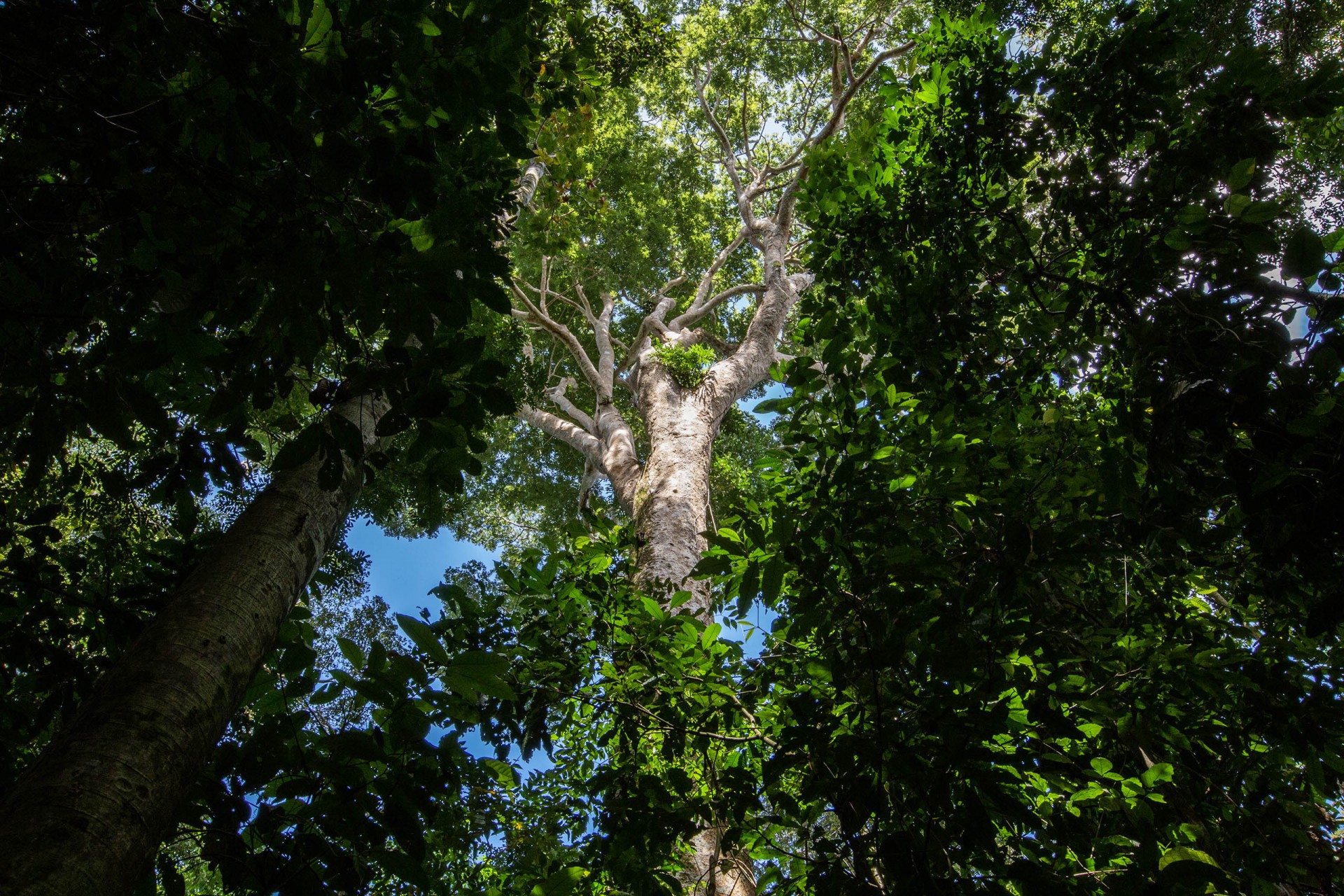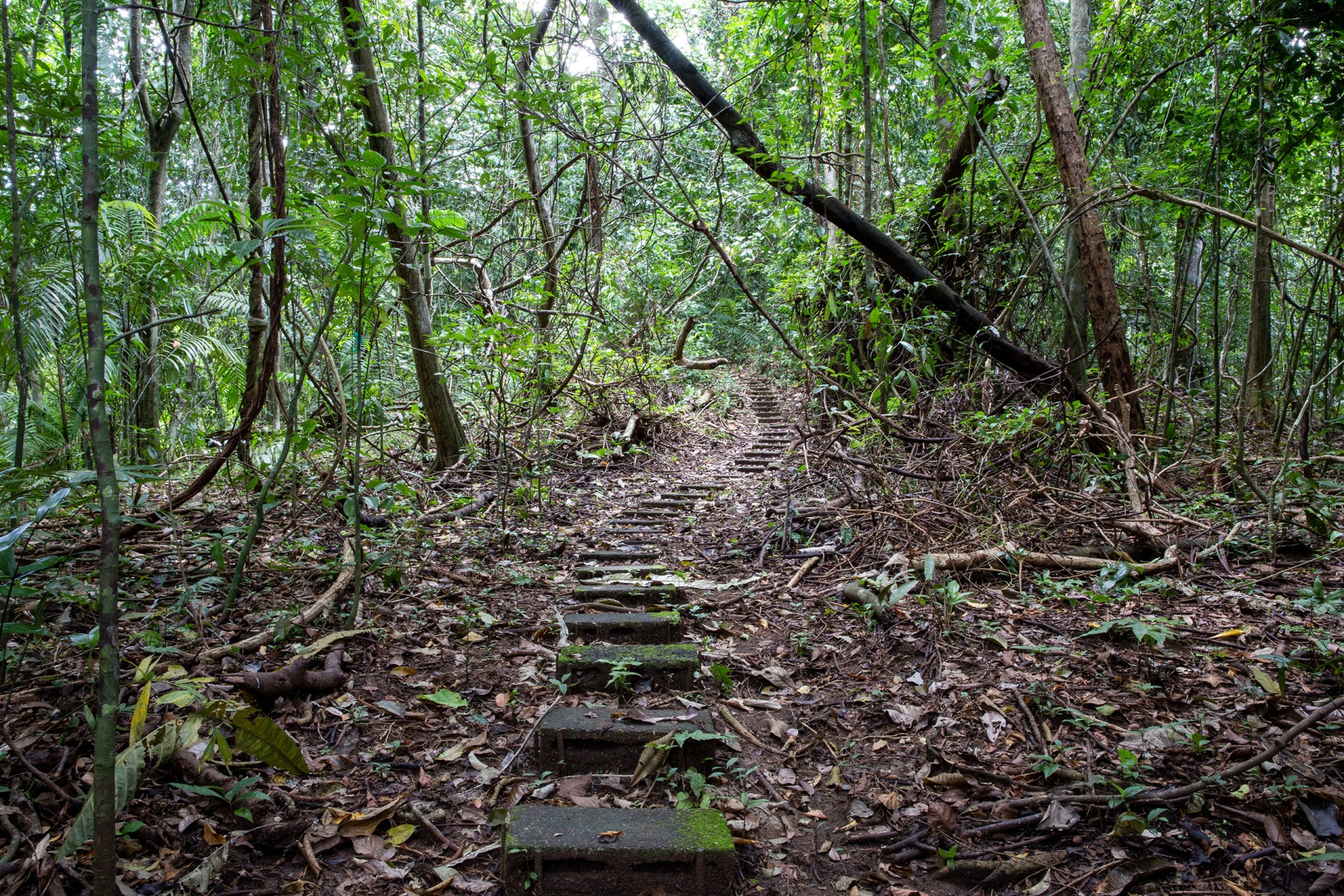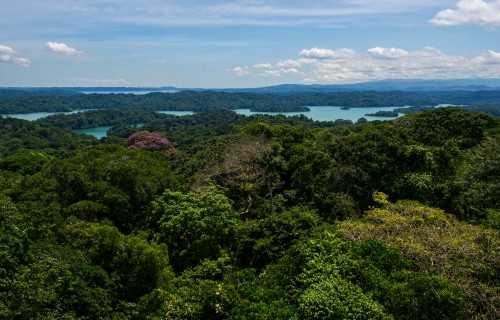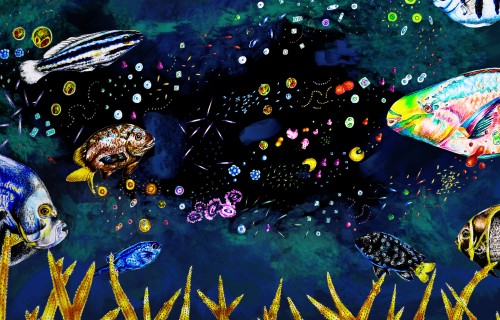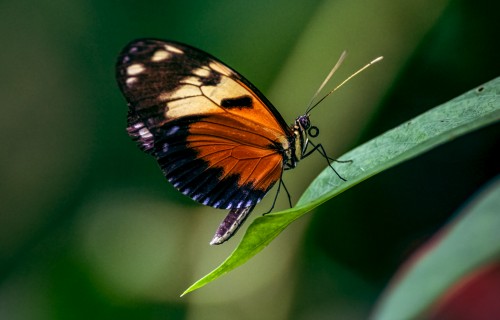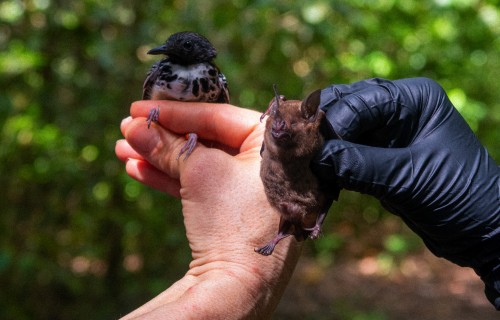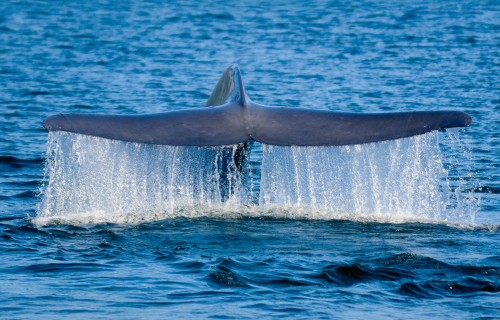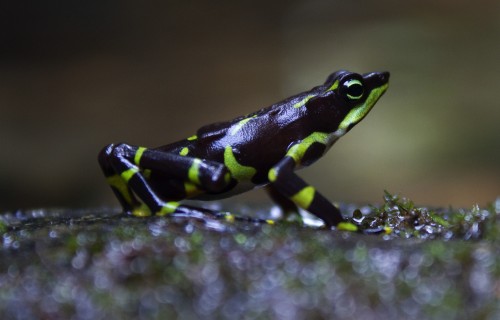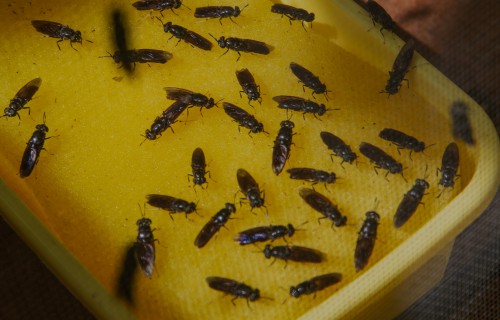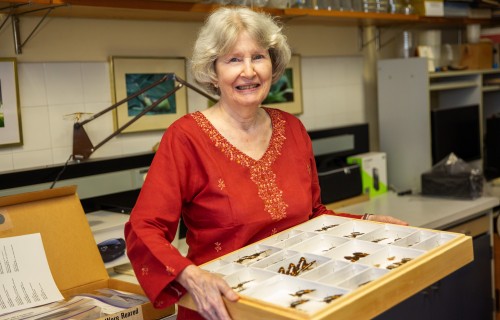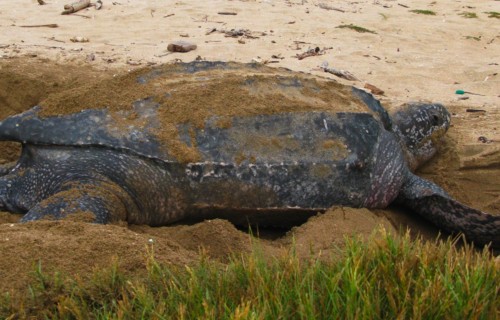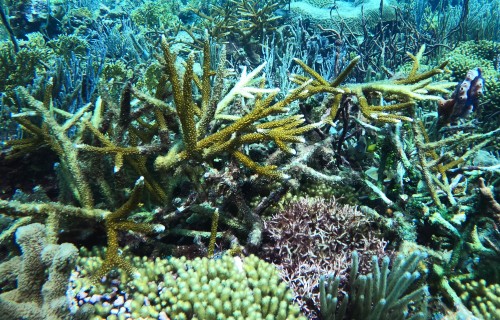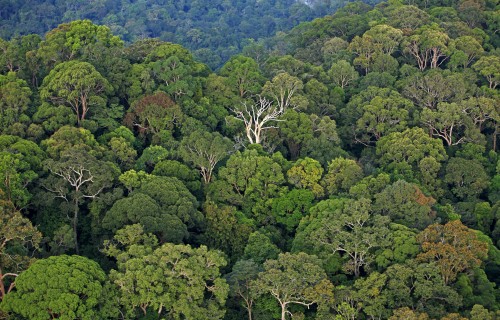Above the tropical forest canopy,
sensors capture the fluxes of gases
between the trees and the atmosphere
Centennial
celebration
Barro Colorado Island,
100 years of science and discoveries
Byline Vanessa Crooks
Five Panamanian scientists share a glance at the experience of working in the tropical biologist’s dream, Barro Colorado Island.
Waking up to the roars of howler monkeys, encountering a variety of animals on the trails, coexisting with researchers from all over the world, and having dozens of experiments and a wealth of data collected for decades in one place; these are some of the unique experiences that Barro Colorado Island (BCI), the first research station of the Smithsonian Tropical Research Institute (STRI), has provided to tropical biologists for a century.
Arriving at Barro Colorado Island. Credit: Steven Paton, STRI.
There is also a century of stories and diverse perspectives of researchers who have passed through this island and the significance it has for science. The 1,560-hectare island, which was created during the construction of the Panama Canal, is a natural tropical laboratory where the effects of lightning on trees, plant microbiomes, insect behavior, mammal-seed interactions, and much more are studied. Nearly one hundred years of climate data, four decades of environmental monitoring, and the first long-term, large-scale tropical forest monitoring plot since 1980 have provided valuable information on how forests and their inhabitants change through the ages.
Panamanian men and women have worked on the island since its inception, as administrative staff, security team, rangers, cooks, etc., and have been essential to the station's operation. And while their access was initially limited to U.S. male scientists, thousands of researchers and students have since arrived from all over, including Panama, to conduct important research projects.
"I came to Barro Colorado in 1986, recommended by Professor Mireya Correa, who was my thesis professor at the University of Panama," says Rolando Perez, STRI research technician and census coordinator since 1995 of the 50-hectare BCI plot, part of the ForestGEO network. "I was one of the few disciples of Dr. Robin Foster, who founded the plot with Dr. Stephen Hubbell. Robin is one of the best tropical botanists in the world; there are very few who can field identify hundreds of trees in the tropics."
The boat Jacana is the de facto transportation to Barro Colorado Island, located only thirty minutes away from the Gamboa pier. Credit: STRI Archives.
Biologist Eloisa Lasso De Paulis, an associate professor at the Universidad de Los Andes in Colombia and a research associate at STRI, says that when she was a student, she did not know about STRI or BCI. "It was when I participated in the Gigante course, a field course for Panamanian students, that I was able to learn about BCI, and all the wonderful opportunities that existed," says Lasso, who has worked with the island's understory plant species, Piper and Psychotria. At BCI, Lasso was an undergraduate research assistant with scientists S. Joseph Wright, Robert Pearcy and Kaoru Kitajima, and returned for her doctoral dissertation.
PhD student at the Max Planck Institute for Animal Behavior in Germany, Claudio Monteza, started as a volunteer in 2010. "I counted troops of howler monkeys in Barro Colorado at 5:30 a.m., for the census conducted by Dr. Katherine Milton," Monteza explains. "In 2013 I was learning to work with camera traps for the Tropical Ecology Assessment and Monitoring (TEAM) project, led by Dr. Patrick Jansen."
The technical secretary of the National Secretary for Science, Technology and Innovation (SENACYT in Spanish)'s National Research System (SNI in Spanish) and associate researcher at STRI, Omar López, says that BCI was the epicenter of his training as a researcher. "I was always curious to do something with plants beyond knowing their names and taxonomy; I was interested in how they grew," he says. He started at BCI with researchers Tom Kursar and Phyllis "Lissy" Coley, who would later become his M.S. and Ph.D. tutors, and worked at BCI evaluating leaf physiology.
Anayansi Valderrama, a senior researcher in Medical Entomology at Gorgas Memorial Institute in Panama, studied common phlebotomine sandfly species at BCI, but it was first as a student in a Field Biology course, and then as a researcher, supervised by Dr. David Roubik, studying sap suckers. "It was enriching to have that experience from a young age on this multicultural island," Valderrama says.
Despite the different experiences, these scientists agree on the aspects that make Barro Colorado Island unique as a research site.
"We still don't know all the diversity and ecological interactions that exist in a tropical forest like the one on BCI. Only by knowing how it works can we learn to conserve and manage it in a sustainable and profitable way," says Pérez, who also highlights the importance of training future generations of scientists and teamwork.
"BCI is a local, regional and global reference on climate change issues, and in training researchers, and for the next 100 years, I hope it will continue to be fundamental in both," says Monteza.
Lasso points out that at BCI it is possible to build on existing knowledge, something that is not available in many tropical sites around the world. "In addition, researchers come from all over the world, lasting friendships, networks and connections are created because of being 'locked' on the same island and 'disconnected' from the rest of the world," she adds.
"It's an extraordinary place to conduct experiments of all kinds, and where the rigor of science makes you see the world in a different way," says Valderrama.
López concludes that BCI's success lies in the fact that it is a research site protected from anthropogenic elements that can alter natural processes, and that it creates knowledge capital. "Natural laboratories allow us to understand the trajectory of our natural ecosystems and this will be of great advantage in the future," he says. "We must have more labs like Barro Colorado."
This article was originally published in the August 2023 issue of IMAGINA magazine, the publication of the National Secretary for Science, Technology and Innovation (SENACYT). You can access the story through: SENACYT’s website

